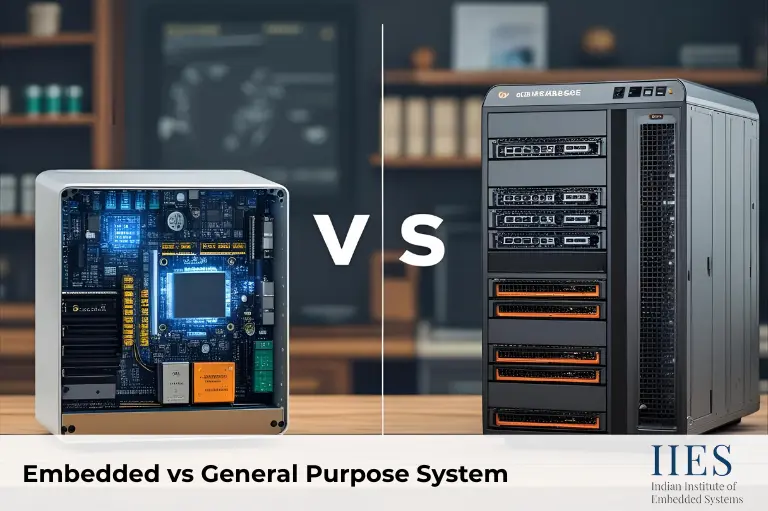
In today’s technology-driven world, understanding the difference between embedded systems and general-purpose systems is essential for making informed technology decisions. Embedded systems are tailored for dedicated tasks with high efficiency, while general-purpose systems are built to handle a wide range of applications with adaptability. Recognizing these differences will help you choose the right system for your specific project or application needs.
Embedded systems are specialized devices designed to perform specific tasks efficiently within larger systems, while general-purpose systems handle a variety of tasks with flexibility, used in computers, laptops, and servers.
Embedded systems focus on performing a single dedicated task with high efficiency. They work quietly in the background to control specific functions within larger devices.
Embedded systems use specialized hardware designed for particular tasks, focusing on minimal power and size. This ensures they operate reliably within limited resources.
Embedded systems usually run lightweight or real-time operating systems designed to respond quickly and predictably. This is crucial for applications that require timely processing.
Programming embedded systems demands knowledge of hardware constraints and efficient coding. Developers often use languages like C or Assembly to meet performance needs.
Embedded systems have strict limits on memory, processing power, and energy consumption. These constraints shape their design to ensure optimal performance for specific tasks.
Embedded systems are found in everyday items like home appliances and cars, handling specific control functions. Their role is expanding with the rise of IoT devices in smart technologies.
This comparison highlights how embedded systems prioritize efficiency and specialization, while general-purpose systems emphasize flexibility and power for multiple tasks.
| Feature | Embedded Systems | General-Purpose Systems |
|---|---|---|
| Purpose | Single dedicated task | Multiple diverse tasks |
| Hardware | Custom, low power, small | Powerful, flexible |
| Operating System | RTOS, lightweight | Full-featured OS |
| Programming Languages | C, C++, Assembly | Python, Java, C++, many options |
| Resource Constraints | Limited memory & power | Fewer limitations |
| Examples | Microwaves, pacemakers | Laptops, servers |

While embedded systems are purpose-built, efficient, and reliable for specific functions, general-purpose systems deliver versatility and the ability to handle a variety of tasks. Both are essential to modern technology; the key is knowing when to use each.
Choosing the right system depends on the task’s requirements, available resources, and performance needs. In short:
The main difference lies in purpose. Embedded systems are designed for specific, dedicated tasks, while general-purpose systems handle multiple, varied tasks.
Embedded systems are optimized for low power consumption, have limited hardware designed for a single function, which makes them highly efficient.
While technically possible, general-purpose computers are not optimized for embedded tasks due to higher power consumption and complexity.
Embedded systems are used in household appliances, automotive systems, industrial automation, medical devices, and increasingly in IoT applications.
Yes, embedded systems usually run real-time operating systems (RTOS) or lightweight OS versions tailored for specific tasks.
Absolutely ,Knowledge of embedded systems is valuable in many fields, including IoT, automotive, robotics, and consumer electronics.
Indian Institute of Embedded Systems – IIES